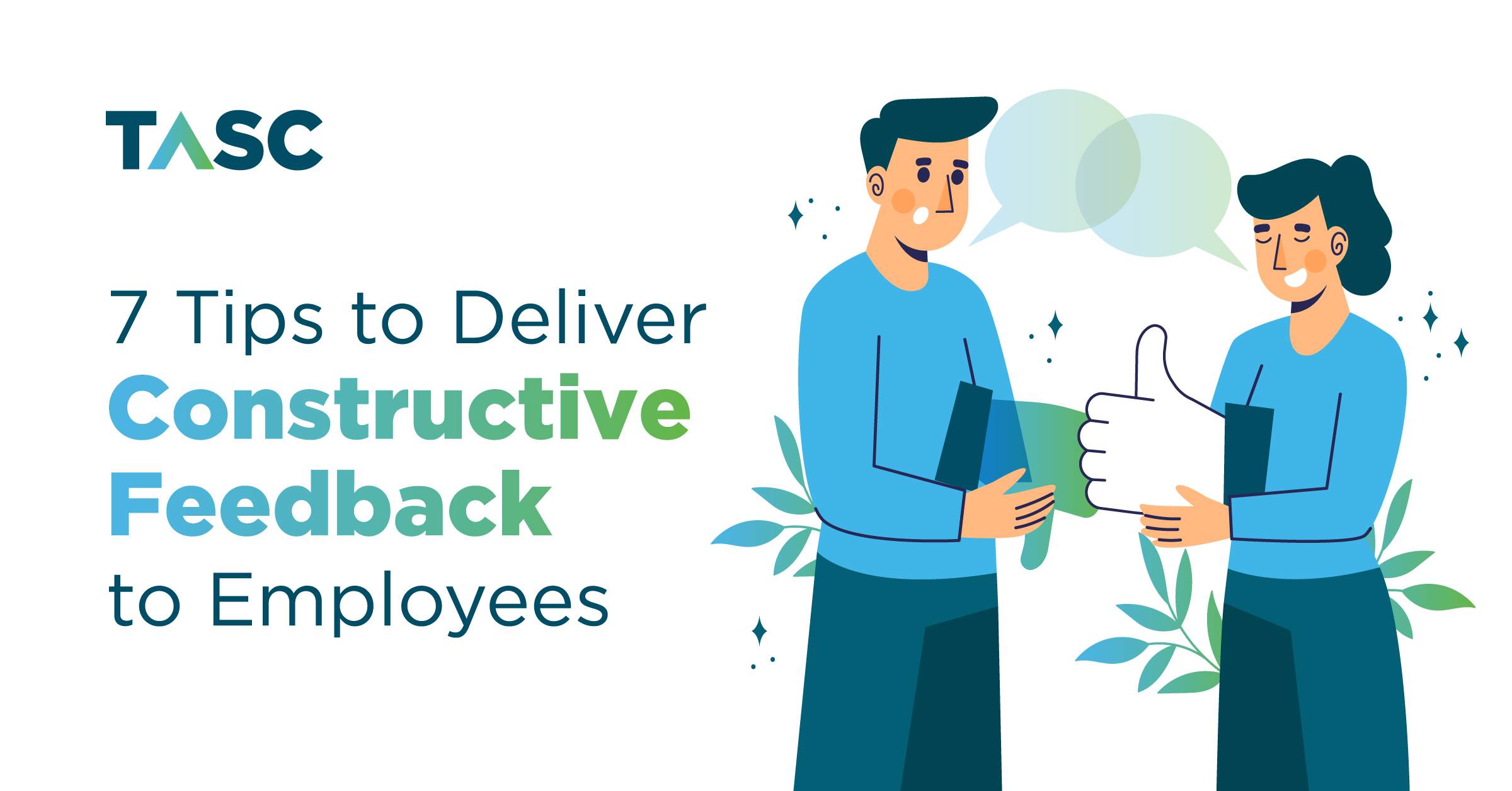7 Tips to Deliver Constructive Feedback to Employees
As the anchors of an organisation, managers play the crucial role of supporting and mentoring employees who use their efforts to steer the company in the right direction. They are responsible for improving employee engagement and productivity, and regular feedback sessions work as tools to help them achieve that goal. Not only that, but effective feedback also plays a paramount role in the development as well as retention stages of employee experience.
Despite the importance of employee feedback and performance reviews, it’s not difficult for managers to make mistakes. Sometimes, it could be because of a communication gap, and other times, it might result from negative body language. Or, in the worst cases, managers may unintentionally or intentionally use derogatory words to make remarks.
Research shows that about 69% of employees end up working harder when their efforts have been recognised. On the contrary, it can significantly contribute to employee dissatisfaction. If the latter is prevalent in your organisation, it is high time you adopt a better approach for delivering manager feedback to employee – a plan of action often called constructive feedback.
Luckily, we have outlined seven tips that you, as a manager, can implement in your current strategy to offer feedback to employees constructively.
Tip 1 – Make Feedbacks Frequent
While the frequency of feedback usually depends on your organisational schedule and structure, it is best to deliver constructive feedback soon after a situation takes place. The earlier you provide feedback, the sooner you can expect your employees to implement changes.
When you take too much time to give feedback, your employees might have forgotten certain behaviours or situations that may have occurred in the past, which is likely to make it difficult for you to solve issues. At the same time, too frequent feedback sessions can also become overwhelming and may seem like you're micromanaging.
Tip 2 – Make It A One-on-One Meeting
It is always better for manager feedback to be delivered in person instead of via emails or video conference calls. Because text messages and emails don’t offer non-verbal cues, they can often be misunderstood.
Besides that, managers should also ensure that the review session is conducted individually instead of in a group. In a one-on-one session, you can offer dedicated attention to each employee, discussing their career goals and performance, ultimately making them feel valued.
On the other hand, a group review session can make your employees feel uneasy, even embarrassed, to a certain extent, and you may run the risk of them not communicating openly with you. If employees are intimidated by their peers, they might be unreceptive to your feedback, which will fail to achieve the objective of the meeting in the first place.
Therefore, individual sessions are a much better approach because they allow you to freely discuss challenges and aspirations while offering professional guidance.
Tip 3 – Keep Your Tone Positive Throughout the Session
As a leader, you must be extremely mindful of your language while discussing the problem areas in a feedback session. Derogatory language or tone can significantly demotivate your employees, and they’ll only end up focusing on your harsh tone instead of the message you conveyed during the meeting. As a result, the employee may become resentful and ruin the relationship you share with them.
Because of this reason, you should take an optimistic approach while delivering feedback that focuses on betterment instead of criticism. You should display confidence in your employee’s abilities, and your message should be framed while keeping that in mind.
A constructive feedback example with an optimistic approach would typically be along the lines of complementing the employee to show you’re confident in their efforts and then highlighting areas that could be improved.
Tip 4 – Begin with Achievements and Highlight Areas of Improvement
Feedback doesn’t have to be just about discussing the negative aspects or performance gaps. Acknowledging the achievements of your staff is equally important, so include that in your feedback meetings as well.
When you only talk about setbacks and performance gaps, it can discourage your employees and take a toll on their self-confidence. Thus, starting your feedback meetings with positives or strengths and then moving on to the weaknesses would work better. By doing so, you show that you consider your employees to be ‘assets,’ which encourages them to proactively look for ways to close their performance gaps.
Tip 5 – Use Facts and Context to Make Feedback More Objective
For feedback to be effective, it needs to be straightforward and specific. Managers must point out the things that can be improved – the reason why they’re having a feedback meeting in the first place.
The best way of doing so would e to give concrete examples of behaviours and situations to support a point. Using employment metrics can also help in pointing out performance gaps to keep feedback objective.
For instance, instead of saying, “your presentation skills aren’t good,” you can comment that “I see you reading from a script during presentations”, to highlight an issue. It will offer clarity to your employee, enabling them to work on ways that can help improve their drawbacks.
Tip 6 – Listen to Your Employees by Making the Session a Two-Way Conversation
Feedback meetings need to be a dialogue between two individuals instead of a monologue. As a manager, you must allow your staff to respond to the feedback you offer to explain their side of the story. It is paramount that you understand why your employee has been behaving in a certain way before you can make suggestions.
When you listen to their opinions, it offers you a clearer perspective, making it easier to come up with solutions. By giving your employee an opportunity to speak, you’ll also make them feel respected, which may indirectly motivate them to perform better.
Tip 7 – End the Feedback on a Positive Note by Offering Actionable Guidance
How you end a feedback session is also very important. When you conclude, you should summarise the key points and enquire about the takeaways of the meeting because it will help you understand whether you’ve conveyed your message accurately. You should encourage your staff to ask questions and clarify doubts regarding the session.
It is also essential to end everything on a positive note because you want your staff to leave feeling driven, purposeful, and confident after the session. Only when they feel that way can you expect them to push their limits further.
Pro Tip – Transforming Feedback Into Collaborative Success
Giving feedback can be pretty hard. No one likes the idea of being the bad guy in a conversation, and the takeaway is that you don’t necessarily have to be one.
When you give feedback, don’t just talk about things that an employee is doing wrong, but provide solutions too. Additionally, you may want to create bullet points for areas that you wish for your staff to improve. The idea is to work together and come up with solutions instead of looking for someone to blame. And when you find them improving, don’t forget to encourage their behavioural change with rewards.
That being said, you must expect resistance throughout the process. Effective feedback isn’t just a day’s work; instead, it takes time and demands consistency. However, if you put these practices into action, you are bound to witness a gradual change in your organisation over time.





